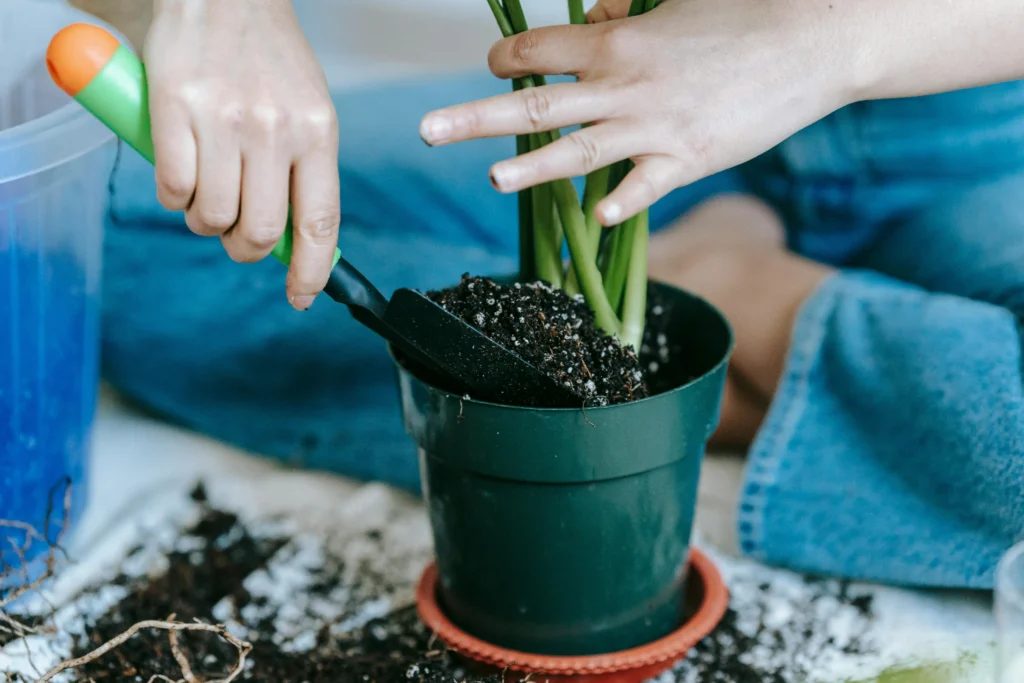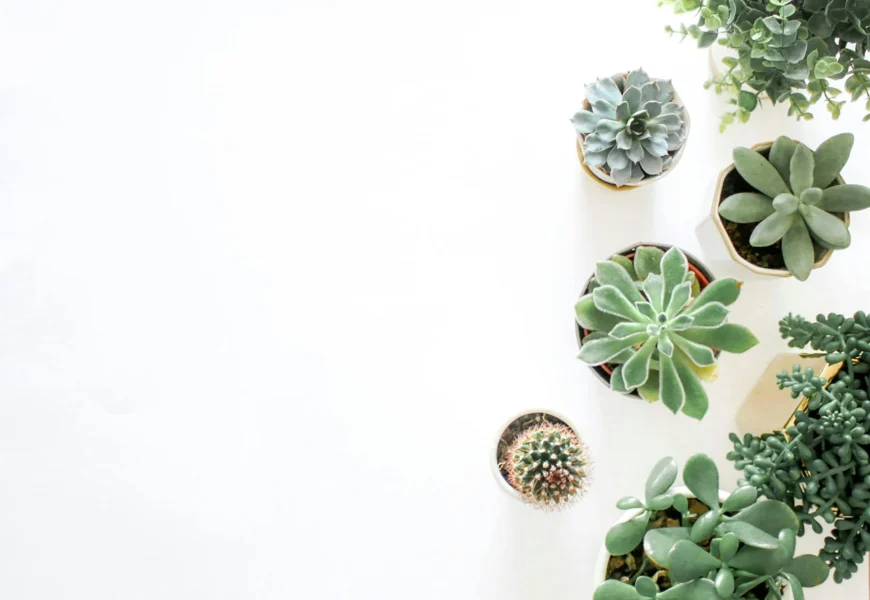Ah, the joy of houseplants! Bringing the outdoors inside, adding vibrant life to your home, and creating a mini-jungle haven. But what happens when the soil beneath those luscious leaves starts to look a bit… off? Yep, you guessed it, mold. Fear not, green thumbs, because this article will guide you through the ins and outs of mold in houseplant soil, from its origins to tackling it head-on, and finally, keeping it at bay.
Table of Contents
Understanding Mold in Houseplant Soil
Mold, a ubiquitous organism, finds a cozy home in damp environments, and sadly, your beloved houseplant soil can be a prime real estate for it. Now, don’t panic! It’s not always a harbinger of doom. A little mold, like those fuzzy white patches you sometimes see, isn’t usually a cause for major concern. But, when mold proliferates and begins to look like a green fuzz or a slimy, grayish film, it’s time to take action.
Mold can be tricky. Sometimes it just looks like a harmless white powder, but when it’s a vibrant, fuzzy green, it indicates a more significant problem. It can affect your houseplant in a few ways. First, it can steal nutrients meant for your plant, leading to a less vibrant, healthy look. Second, some molds can produce toxins that can be harmful to both your plant and you. Finally, it can be unsightly and negatively impact the aesthetics of your beautiful green space.
Don’t let mold dim your houseplant joy! We’ll dive into the common culprits that give rise to mold, how to prevent it from taking root, and the best ways to treat an infected pot.
Related Articles:
- Find out how amazing and strong ZZ plants are. – Discover a super tough houseplant that can even withstand a bit of neglect!
- Pet-friendly houseplants: Creating a safe haven for your pet. – Learn how to create a pet-friendly oasis filled with beautiful plants!
- Green Gold Rush: The High Cost of Houseplants. – Find out if your houseplant habit is too expensive!
- The green thumb guide: 5 ways houseplants boost your well-being. – Discover how houseplants can bring a boost of happiness and wellness to your home!
Common Causes of Mold Growth
Mold in houseplant soil is a common occurrence, especially in humid environments or during the winter when homes are heated and dry. It can be unsightly and even pose a health risk to you and your pets if not addressed properly. Here are some common culprits:

Overwatering: This is the most common cause of mold in houseplant soil. When you water too often, the soil stays wet for extended periods, creating a perfect breeding ground for mold spores.
Poor Drainage: If your plant pots lack adequate drainage holes, or if the drainage holes are blocked, water can accumulate in the soil, leading to mold growth.
Excessive Humidity: High humidity levels in your home, especially during the winter months when the air is dry, can contribute to mold growth in your plants.
Improper Soil Mix: Using soil mixes that retain too much moisture, like heavy clay soil, can increase the likelihood of mold. Opt for a well-draining potting mix instead.
Dirty Pots: Old pots that haven’t been properly cleaned can harbor mold spores, which can easily transfer to the soil.
Organic Matter: While organic matter like compost is beneficial for plant health, it can also increase the risk of mold growth if it’s not fully composted.
Poor Ventilation: Lack of airflow around your plants can create a humid environment that encourages mold growth. Ensure proper ventilation to circulate air and reduce moisture levels.
Remember, while mold can be a nuisance, it’s not always an indication of a serious problem. But addressing the underlying cause is crucial for keeping your plants healthy and your home mold-free.
Want to learn more about keeping your houseplants thriving? Check out these informative articles:
Preventing Mold in Your Houseplants
Mold in houseplant soil is a common problem, especially for those who are just starting out. Fortunately, a few simple steps can help you prevent mold and keep your houseplants healthy and thriving.
Water Wisely: One of the most significant contributors to mold growth is overwatering. Plants prefer their soil to dry out slightly between waterings, especially during the winter months. Allowing the soil to dry out encourages healthy root development, and it also helps prevent mold from forming. Learn more about the right way to water your houseplants here.
Use the Right Potting Mix: The type of potting mix you use can also impact mold growth. Look for a well-draining mix that doesn’t retain excess moisture. Avoid using soil that is too dense or heavy, which can make it difficult for water to drain properly. Read about some innovative ways to improve your potting mix.
Choose the Right Pot: The pot you choose can also affect the risk of mold. Clay pots tend to be more porous, which allows excess moisture to evaporate, reducing the risk of mold growth. Plastic pots can hold moisture for longer, increasing the likelihood of mold. Consider using a pot with drainage holes to ensure excess water can escape.
Good Air Circulation: Mold thrives in damp, humid environments. Good air circulation around your plants can help reduce humidity and make it more difficult for mold to grow. Avoid crowding your plants too closely together, and make sure they have enough space to breathe.
Cleanliness is Key: Regularly cleaning your houseplant pots and trays can prevent mold from spreading. Remove any dead leaves or debris from the soil, and wipe down the surfaces of your pots to prevent mold spores from accumulating.
Consider a Natural Approach: There are several natural remedies that can help combat mold growth. Adding a layer of mulch to the top of your potting soil can help prevent excessive evaporation and keep the soil moist without causing mold problems. Adding cinnamon, a natural antifungal, to your soil can also help prevent mold. Learn how to use cinnamon to create a more beautiful and healthy plant aesthetic.
By following these simple tips, you can easily prevent mold from taking hold in your houseplant soil, allowing your plants to thrive and create a vibrant and healthy indoor jungle. Remember to be patient with your plants and they will reward you with beautiful flores and a vibrant plants aesthetic.
Treating Mold in Houseplant Soil
So you’ve spotted mold in your houseplant soil. Don’t panic! While it can seem daunting, treating mold is achievable. Here’s how to approach it:
Assess the situation: First, check how widespread the mold is. Is it just a thin layer on the surface, or is it growing throughout the soil? If it’s just on the surface, a simple solution might work. But if it’s deep-rooted, you might need to repot.
Remove the affected layer: If the mold is only on the surface, gently scoop it off with a spoon or trowel. Dispose of the moldy soil in a sealed bag, not your compost bin, as this can spread spores.
Replace with fresh soil: After removing the mold, refresh the topsoil with a new layer of well-draining potting mix. Avoid using old soil, as it may contain residual spores. You can find a range of quality potting mixes that are specifically designed for houseplants, ensuring proper drainage and aeration.
Repotting for severe cases: If the mold is pervasive throughout the soil, consider repotting your plant. Choose a pot that’s only slightly larger than the original to prevent overwatering. When repotting, use fresh, sterile soil and inspect the roots for any signs of damage. If you notice any rotted roots, trim them carefully with sterilized scissors.
Boost Drainage: Mold thrives in damp conditions. Make sure your houseplant has well-draining soil to prevent waterlogging. Check if your pot has drainage holes and ensure they’re not clogged.
Reduce watering: Overwatering is a common cause of mold. Allow the top inch of soil to dry out before watering again. You can also use a moisture meter to gauge soil moisture levels.
Use a fungicide: In extreme cases, you can use a fungicide to kill mold spores. Choose one that’s specifically formulated for indoor plants, and follow the directions carefully.
Improve air circulation: Mold loves humid environments. Improve air circulation by opening windows or using a fan to reduce humidity around your plants.
Cleaning the pot: Mold spores can cling to your plant’s pot. Cleaning it with a mild disinfectant solution can help prevent reinfection.
Regularly check for signs: Keep an eye out for signs of mold, especially during humid seasons. Don’t wait until it’s a major issue before addressing it.
Remember, a bit of mold is usually harmless. By following these steps, you can effectively deal with mold in your houseplant soil and keep your plants healthy and thriving.
If you’re looking for more tips on creating a safe haven for your furry companions, check out our guide on Pet-Friendly Houseplants: Creating a Safe Haven for Your Pet. And if you’re interested in creating a lush indoor jungle without breaking the bank, learn about the real cost of houseplants.
Essential Tips for Maintaining Mold-Free Soil
To keep your houseplants thriving without mold, follow these key steps:
- Water Correctly: Avoid overwatering, as this creates a damp environment that encourages mold growth. Allow the top inch of soil to dry out before watering again.
- Proper Drainage: Ensure your pots have drainage holes to prevent water from pooling at the bottom, which can lead to root rot and mold.
- Ventilation: Good air circulation helps prevent mold by reducing humidity. Place your houseplants in well-ventilated areas or use fans to create airflow.
- Cleanliness: Regularly clean any spills or debris around your plants to prevent mold spores from accumulating.
- Repotting: If mold persists, consider repotting your plants in fresh soil. This will help remove any mold spores that have already taken root.
Conclusion
Mold in houseplant soil is a common problem, but it doesn’t have to be a major concern. By understanding the causes, prevention, and treatment methods, you can keep your houseplants healthy and vibrant while ensuring a clean and safe environment for your home. Remember, even if you struggle with low light conditions in your home, there are many good houseplants for low light that will thrive indoors.
With a little attention and care, you can enjoy the beauty of your houseplants without worrying about mold. Perhaps you can even incorporate a few into your backyard landscaping, making your home a haven for lush greenery. And who knows, maybe you’ll be inspired to take your green thumb to the next level with some innovative solutions for vertical gardening.
Happy gardening!







